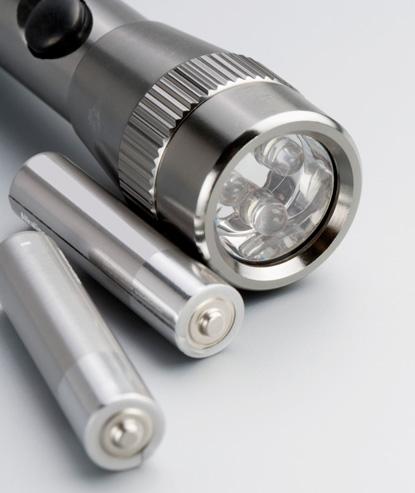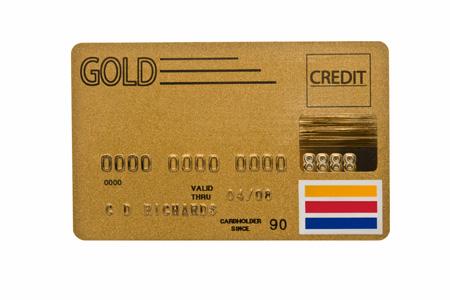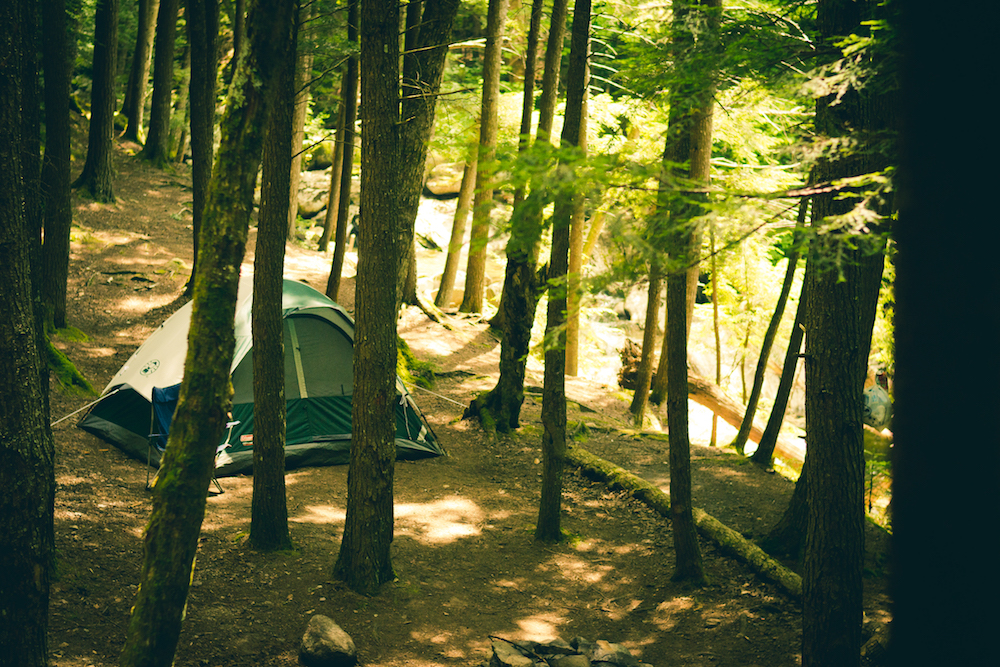Advertisement
Our field editors are a savvy lot. Not only are they expert anglers and hunters, they also know a lot about outdoor life in general. Having spent so much time on the water and in the field, after all, it’s not surprising they’ve accumulated a wealth of outdoor wisdom. With that in mind, we tapped them for their top tips on living smarter in the field. Here are our favourites, along with a few ideas of our own.
1. Stop a Boat from Sinking
A toilet wax ring can be forced into any shape to stop a major leak. Push the wax into the hole or crack, wedging it into place with any stiff material, such as a piece of wood, that can be braced or screwed down. Store the wax ring in an old towel in the shade, given heat makes it gooey. —Alan Davy
Advertisement
2. Patch a Minor Canoe Leak
Light the end of a nylon rope on fire and let the drips of molten nylon fall around the edges of the hole or crack in your canoe. Allow the nylon to cool, then repeat on both sides of the hull—each pass will reduce the size of the opening until it’s bridged over. Reinforce the patch with duct tape. —Alan Davy
3. Pack Dental Floss
Aside from dental hygiene, dental floss has a thousand other uses. It’s ideal for re-dressing frayed bowstrings, winding guides back on fishing rods and fixing torn tarps. For a wind indicator, attach a piece to the end of your rifle barrel. A compact, 50-metre container of floss even comes complete with its own cutter. —George Gruenefeld
4. Organize Your Food
For camping trips, pack your foodstuffs into plastic olive barrels recycled from restaurants or bulk food stores. They’re light, tough and watertight—you can even sit on them. With their wide mouths, they make picking ingredients for meals a lot easier than rooting through one large food barrel. —Tom Adamchick
Advertisement
5. Use Reusable Bags
To save space for backcountry trips, repackage store-bought food in resealable plastic bags, which come in multiple sizes. Food storage aside, they can also be used as air pillows, hot water bottles, ice packs and camera protectors—the list goes on. —Bob Sexton
6. Stay on Track
To find your way in and out of the woods in the dark, staple 3/4-inch squares of reflective tape to both sides of stumps or trees along your route. The tape is visible at 50 yards with an ordinary flashlight. You can also mark the route to your duck blind through confusing reed channels. —Alan Davy

7. Save Your Batteries
Ever arrived at a backwoods destination at nightfall only to find your flashlight accidentally switched on and the batteries dead? Avoid this with any battery-operated gear by putting the batteries in backwards when travelling. —Bob Sexton
8. Filter Water Easier
For clean camp water, forget about having to pump, boil or apply chemicals. Instead, let a gravity-powered water-filter bag do the hard work. Simply fill it, hang it and enjoy safe, fresh-filtered water within minutes. Get one at any camping goods store. —Tom Adamchick
9. Make a Canine First Aid Kit
Your hunting dog runs many health risks afield, so always carry supplies to stop bleeding and protect wounds, splint limbs, rinse eyes and ears, manage pain, treat allergies and diarrhea, and remove embedded objects. Store-bought kits are available, but you can get most of the supplies from your vet or over the counter. —Ken Bailey
10. Make No-fail Fire Starter
Melt candle stubs in an old coffee can, mix in as much sawdust as the wax will absorb, then spoon the mixture into paper egg cartons, packing it tight. Once cooled, break the carton into individual segments—ignite just one to start a campfire, or to light up a fireplace or wood stove. —George Gruenefeld
11. Change Quickly
Whenever I got completely soaked in the past, I’d have to search through my gear trying to piece together a dry outfit. Now, I pack entire clothing changes—socks, underwear, pants, shirt, fleece and windbreaker—in individual waterproof bags. If I get wet, I simply pull out a bag and change. —Mark Anderson
12. Stay Warm on Cold Nights
Place three or four fist-sized rocks around your campfire an hour before bedtime. When you turn in, wrap them in a towel and stow them in the foot of your sleeping bag. Avoid river rocks, because the moisture may cause them to explode when heated. —Ken Bailey
13. Pack Smarter
Avoid a top-heavy backpack. Instead, place heavy items in the middle of the pack and nearer to your back. This will greatly increase your balance and make carrying big loads much more pleasant. —T.J. Schwanky
14. Fix Your Fuel Hose
Twice I’ve been faced with a dried and cracked fuel hose on my outboard motor. To salvage the day each time, I cut a fresh pine branch and used the pitch to seal the cracks, then wrapped duct tape overtop. This trick works well on loose hose connections, too. —Brad Fenson
15. Cook Bannock In the Wild
Mix 1 1/2 cups of flour, 1 1/2 teaspoons of baking soda and a half teaspoon of salt; store in a resealable bag. To make bannock once you’re in the field, simply add two tablespoons of margarine and slowly add enough water to make thick, spreadable dough. Preheat the pan, melt one tablespoon of margarine and pat the dough into the pan. Shake the pan to keep the bannock from sticking, and flip when brown. —Wayne Phillips
16. Tether Your Cap
Why buy a commercial cap tether when you can make your own? Simply fasten alligator clips to both ends of a 1 1/2-foot-long piece of fly line or heavy mono. Then attach one clip to the back of your cap and the other to your shirt or jacket collar. No more lost caps on boat trips. —Wayne Phillips
17. Protect Your Barrel
Stick electrical tape over your rifle’s muzzle to keep dirt, debris and moisture from getting in the barrel. The tape also adds a bit of extra protection for the barrel crown. And don’t worry, you can shoot right through the tape without affecting accuracy.
18. Stop Bleeding
Include cyanoacrylate adhesive, such as Krazy Glue or water-resistant Zap-A-Gap, in your first aid kit—it’s a great emergency suture, sealing nasty cuts instantly and protecting them from infection. Simply wash the cut, apply a drop of glue and press the wound shut. —Wayne Phillips
19. Clean Your Thermos Bottle
Hot water and baking soda can remove the grime from your Thermos bottle, but denture-cleaning tablets work even better. Just fill your Thermos bottle with warm water, drop in a tablet and let it soak. When you rinse it out later, it will sparkle like new. —Gord Pyzer
20. Ditch the Pitch
Ever had pine pitch drip on your vehicle, stain your hands or gum up your gear? Tough to clean off, right? I used to think so, until I borrowed an old parenting tip for removing bubble gum from hair: rub in smooth peanut butter. Yup, it breaks down pine pitch, too. —Patrick Walsh
21. Make a Portable Anchor
When portaging to remote lakes and extra weight is a concern, the mesh from a basketball net makes a perfect instant anchor—it’s lightweight, tough and effective. Just wire the bottom shut, string a floating rope through the top loops and place a rock inside. Once you weigh anchor, discard the rock. —Wayne Phillips
22. Start a Fire with Your Glasses
As kids, most of us learned how to start a fire with a magnifying glass. Well, you can also use eyeglasses. And to make this method truly effective, place a drop of water on the lens to further concentrate the sun’s rays. —T.J. Schwanky

23. Clean Dishes on Credit
For cleaning a dirty camp frying pan, use an old plastic credit card as a scraper. It works great, won’t damage the pan, cleans up easily, stands up to a lot of use and takes up practically no room in your kitchen kit. —Brad Fenson
24. Boil Water Without a Pot
In an emergency, you can boil water in practically anything that’s leakproof and doesn’t melt or burn at low temperatures—even a paper bag. Skeptical? Try it for yourself on your backyard barbecue. I guarantee you’ll be surprised. —Ryan Shervill
25. Shield Your Feet
Tired of getting wet, dirty socks when changing into and out of your waders alongside your vehicle? Pull out a floor mat and stand on it, doubly serving to protect your neoprene booties from damaging gravel. —Scott Gardner
26. Make Laces Last
Treat your boot laces with bowstring wax to prevent the fibres from drying out and becoming brittle. Treat them annually and your laces will last for years—and never break at an inopportune time. —T.J. Schwanky
27. Eat On the Run
When you don’t want to stop fishing for a time-consuming shorelunch, pre-made sandwich wraps are the way to go. Simply lay down a soft tortilla, spread on your favourite filling and roll it up. Wraps are so compact that you can tuck several right into your fishing vest pocket. —Patrick Walsh
28. Protect Your Vehicle
When you strap gear to your vehicle’s roof, the tie-downs can chafe the paint job. You can easily prevent this by wrapping foam pipe insulation around the straps. —Scott Gardner
29. Never Buy Ice
Keep your cooler cold without adding bulky ice blocks by freezing your meals in large resealable bags instead. Frozen chili, stew and pasta sauce, for example, make great freezer packs. Frozen water bottles also help keep the cooler cold. When you want to use something, simply remove it and let it thaw. —Wayne Phillips
30. Make a Pillow
Show up at deer camp with a big fluffy pillow and your man card might get revoked. Instead, save space—and your dignity—by bringing only a pillowcase. Just stuff it with clothes and you have an instant pillow. —Bob Sexton
31. Leave an Itinerary
Every time you go into the bush or out on the water, tell someone where you’re going and approximately when you’ll be back. That way, if you don’t show up within a reasonable time period, rescuers will know where to start looking. It can save a lot of trouble—and maybe even your life. —George Gruenefeld

